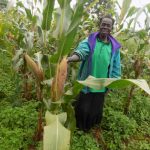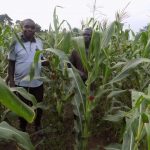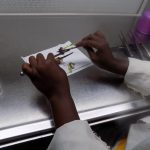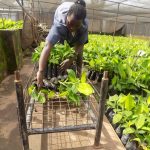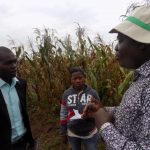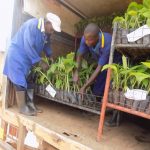NEMA to set rules for GMO release in Uganda
3 min readBy Christopher Bendana
Kampala, Uganda
The National Environment Management Authority (NEMA) in Uganda is working on a set of guidelines and regulations to manage risks from the release of GMOs.
Dr Tom Okurut, the executive director NEMA last week in a virtual meeting told scientists, policymakers, and journalists that in absence of a specific biosafety law the authority that deals with the environment can no longer wait and is in the process of having the guidelines in place.
He said the regulations were important because of the slow progression of the biosafety bill. He expressed fears of unregulated GMO spillover from other countries like Kenya.
“We are tired of waiting,” he said
Kenya, Uganda’s neighbor in the east has already approved the environmental release of insect-resistant GMO cotton and is considering an application for environmental release of GMO virus-resistant cassava.
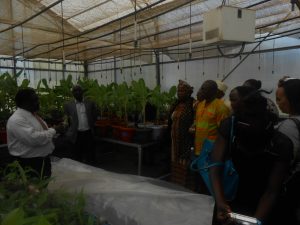
The bill for the Genetic Engineering Regulatory Act (GERA), formerly the Biotechnology & biosafety Bill 2012, meant to regulate GMOs has been in limbo after President Museveni for the second time in August 2019 declined assent to the law.
This is 12 years after Cabinet approved the Biotechnology and Biosafety Policy in 2008 that was to be operationalized by the biotechnology and biosafety law.
Now Section 63 of the National Environment Act (2019) allows NEMA to work with lead agencies such as the National Council of Science and Technology to set guidelines; taking into account the protection of the environment and management of risks to human health from the development, access, use, and transfer of Genetically Modified Organisms.
Concerns of some Ugandans, including the President, have been the fear of GMO crops mixing with indigenous species and the potential loss of these species. The President has however always come out in support of the technology.
The guidelines that will operationalize the Environment Act will also include issues ways on how to handle liability and redress in relation to genetically modified organisms.
Agricultural scientists who have already developed several crop products using GM technology believe having regulations and guidelines can help them have their research products released to the farmers now that they have the support of the environmental czar through the implementation of such regulations and laws depend on much of the political support of the President.
Dr. Okurut was supported by Dr. James Kasigwa, the director of regulation and biosafety at the Ministry of Science, technology, and Technology.
Kasigwa said in absence of a biosafety law, NEMA should be supported to have the regulations in place to handle GMO release into the environment, even from neighboring countries.
“When we don’t have a biosafety law we can leverage NEMA Act to ensure that we have a stop-gap. The issues are real. I was in Kenya recently and they are working to release cotton, he said.
“ Whatever is in Kenya it is a matter of time it will be here.”
Andrew Kiggundu, a Ugandan biotechnologist who is keen on biotech legislation said he is encouraged when he heard the environmental czar side with the biotech scientists on the need for a regulatory framework in the country.
Kiggundu who works as program manager for the Virus Résistance Cassava for Africa Plus, a project based at the Donald Danforth Plant Science Center in St. Louis Missouri explained the significance of having the environment regulator on your side.
“When the environmental leader is not on your side, you get a problem as the Cartagena Protocol of Biosafety is domiciled in the environment,” he argued.
He is though cautious that the regulations under the Environment Act don’t clash with the original biosafety bill when it is passed.
Fred Bwino Kyakulaga, the chairperson Parliamentary Committee on Science, Technology, and Innovation in the Ugandan Parliament concurs with Kiggundu and explains that a subsidiary law can have some impact on regulations of GMOs while working under the Environmental law, but there is need for a substantive law to address GMO release.
On another positive note, Kyakulaga revealed that the fate of the GERA lays with the Speaker who has to call a debate on the bill and vote on it. It can then become law without the presidential assent.
